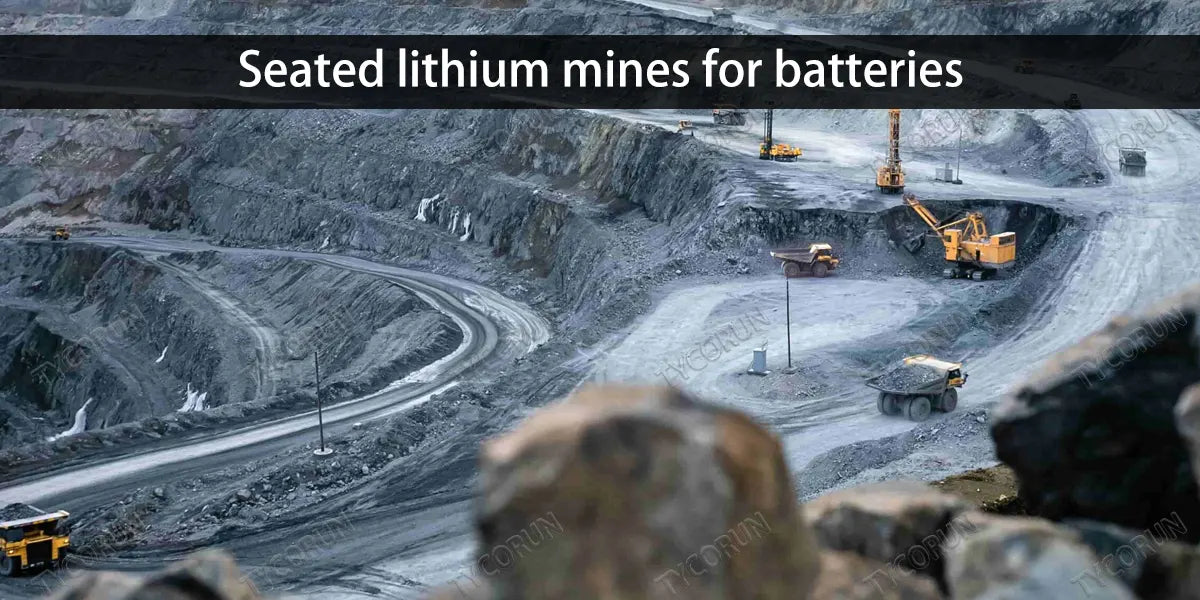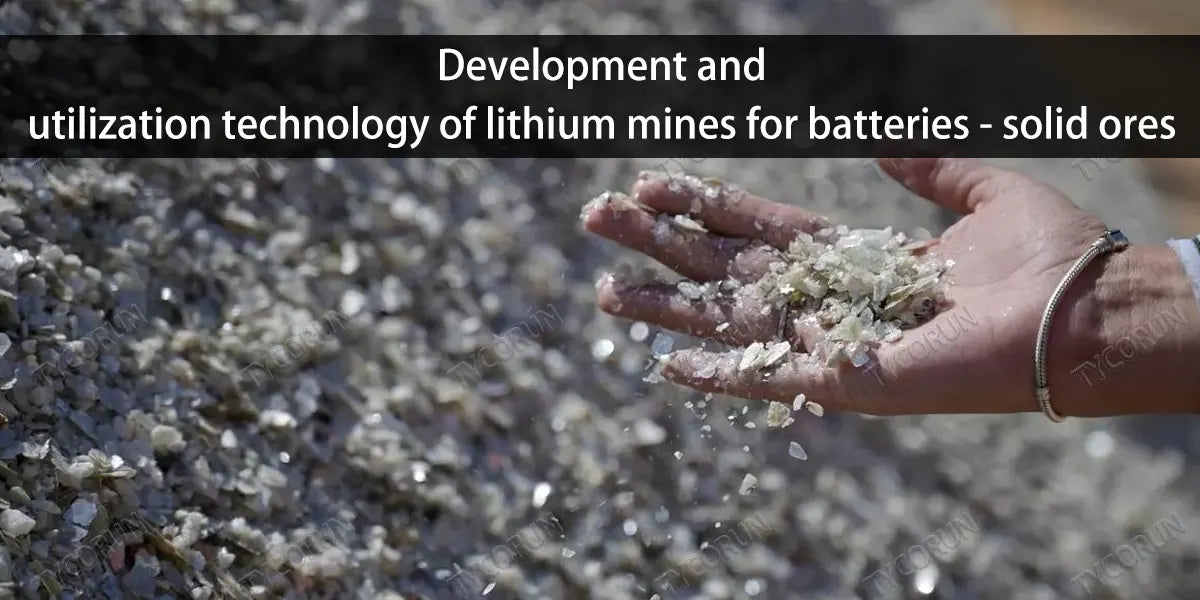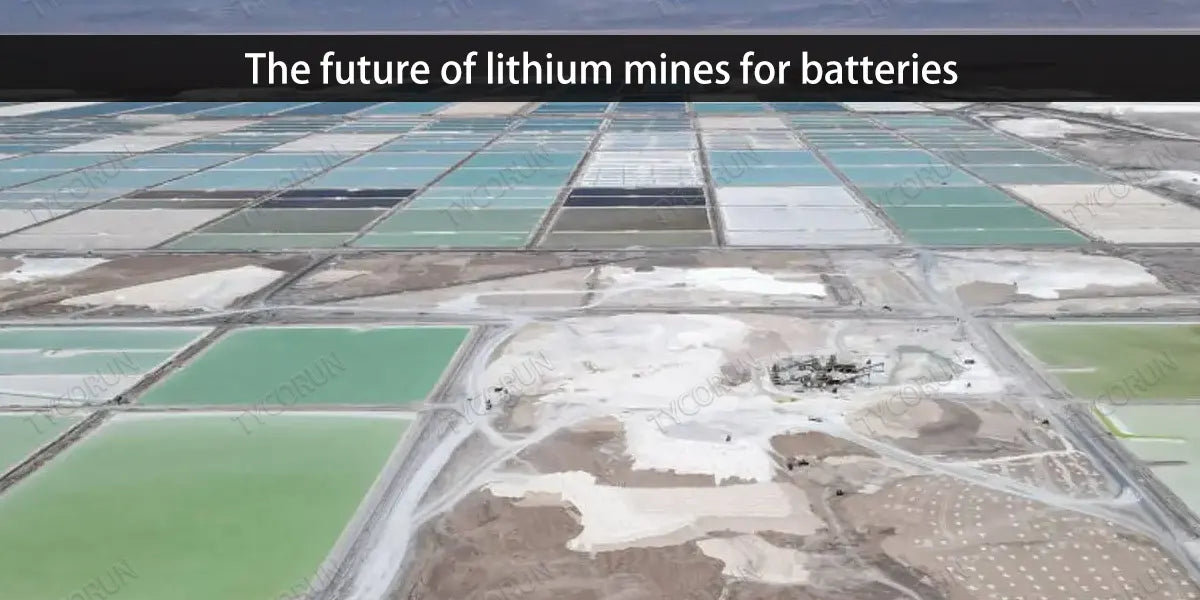
Main content:
- Types and causes of lithium mines for batteries
- Brine-type lithium battery mines
- Pegmatite-type lithium battery mines
- Seated lithium battery mines
- Clay-type lithium battery mines
- Development and utilization technology of lithium mines for batteries
- The current state of the lithium ion battery mines market
- The future of lithium mines for batteries
- Conclusion
Lithium mines for batteries are an important strategic resource, which have a wide range of application prospects in the fields of new energy and new materials.
With the increasing global demand for clean energy and sustainable development, the development and utilization of lithium mines for batteries has gradually become the focus of attention.
1. Types and causes of lithium mines for batteries
① Brine-type lithium battery mines
Brine-type lithium deposits are an important type of lithium deposits and the main source of lithium, mainly distributed in Bolivia, Chile and Argentina in South America, known as the "lithium triangle".
The main mechanism of its genesis is that in closed basins, especially in arid desert areas, lithium can be enriched in underground brine and form lithium deposits with mining value. The prospecting signs for economically valuable salt lake brine lithium deposits can be summarized as follows:
- Necessary features
A closed basin with arid climatic conditions and tectonic activity.
- Distinguishing features
Almost all lithium-bearing basins have experienced faulting activity and have thicker basin fill deposits. The subsidence caused by the fault creates a larger ore holding space and provides a channel for the upward movement of the underground heat flow of the ore-bearing ground. Thicker basin sediments provide a sufficient volume of aquifer to store large quantities of brine.
- Favorable features
With heat flows from young volcanoes or hydrothermal springs, the source rock is lithium-rich felsic glass tuff, and hecmatillonite is often found in the mining area, as lithium in salt lake brine lithium deposits is mainly derived from surrounding magmatic hydrothermal fluids, volcanic ejections, and weathering of lithium-bearing rocks.

② Pegmatite-type lithium battery mines
This type of deposit is widely distributed, mainly produced in relatively stable geological structural units such as ancient crystalline shields and massifs, and the metallogenic age is mainly precambrian, and a few were formed in the early Paleozoic. Ore-bearing pegmatites can be divided into two categories: banded structural pegmatites and bandless structural pegmatites.
③ Seated lithium battery mines
Sedimentary lithium deposits in a broad sense generally refer to lithium deposits produced in sedimentary rocks that do not yet have independent industrial mining and have market competitive value, including deposits produced in bauxite, coal and kaolin deposits that can be used as associated minerals.
Generally, the content is not high, the occurrence state is not clear, or there are often no independent minerals but are deposited in the crystal lattice of clay minerals, which is difficult to develop and utilize economically.
However, due to its very large total resources, it has attracted great attention, especially for some bulk mineral mining companies with low economic benefits. Some have achieved technological breakthroughs and will surely lead the new development of the industry.

④ Clay-type lithium battery mines
Lithium-rich clays are mainly clays rich in hectolite, soapstone and soapstone. Huge amounts of lithium are known to be found in hectorite clay in the western United States.
2. Development and utilization technology of lithium mines for batteries
The development and utilization technology of lithium mine resources for batteries mainly includes mining, mineral processing, smelting and other links. The products like 12v 100ah lithium ion batteries and 12 volt 200ah lithium battery.
Among them, mining and beneficiation are important steps to obtain lithium mine resources, and smelting is a key link to convert lithium ion battery mines into actual products.
① Solid ores
- Mining technology
There are two main mining methods for lithium mines for batteries: open pit mining and underground mining. Open pit mining is suitable for lithium orebodies with exposed surface, while underground mining is suitable for lithium orebodies buried at depth. In the mining process, effective measures need to be taken to prevent damage and pollution to the environment.
- Beneficiation technology
Beneficiation is an important means to extract the available components of lithium mines for batteries. Commonly used beneficiation methods include manual separation, gravity separation, flotation, etc. Hand sorting is mainly used to pick lithium ores with significant differences.
Gravity separation takes advantage of the difference in density of different ores for separation. Flotation uses the physicochemical properties of the ore surface for separation. Depending on the type and nature of the ore, it is necessary to choose the appropriate beneficiation method.
- Smelting technology
The smelting technology for lithium ore mainly includes pyrometallurgy and hydrometallurgy. Pyrometallurgy is mainly to reduce the oxides in lithium ore to metal elements through high-temperature roasting, while hydrometallurgy is to use chemical reagents.

Such as acid or alkali to convert valuable metals in ore into soluble compounds, and then obtain metal elements through precipitation, crystallization and other methods.
Therefore, hydrometallurgy has higher energy efficiency and better environmental performance. At present, hydrometallurgy has become the mainstream lithium ore smelting technology.
② Brine mines
- Precipitation method
Precipitation is a common method for extracting lithium ions. This method is to add a precipitant to the brine of the salt lake to precipitate lithium ions in the form of precipitation, so as to achieve the separation of lithium ions.
The precipitation method has the advantages of simple operation and low cost, but also has the disadvantages of large amounts of precipitate and difficult precipitation washing. In actual production, the precipitation method is often used to treat salt lake brine with high concentration and low magnesium-lithium ratio.
- Adsorption method
Adsorption is a method of adsorbing lithium ions from a solution onto a solid medium. This method has the advantages of simple operation and good separation effect, but also has the disadvantages of large amounts of adsorbent and difficult desorption. In actual production, the adsorption method is often used to treat salt lake brine with low concentration and high magnesium-lithium ratio.
- Extraction
Extraction is a method of extracting lithium ions from a solution into an organic solvent. This method has the advantages of good separation effect and high purity of the product.
However, at the same time, there are also disadvantages, such as large amounts of organic solvent and complex extraction process. In actual production, the extraction method is often used to treat salt lake brine with high concentration and low magnesium-lithium ratio.

- Rope fishing technology
Compared to traditional lithium extraction methods, this technology is skyrocketing in efficiency and cost, and may revolutionize the global lithium landscape in the future. At the heart of this technique is a porous fiber that is woven into a rope that is hydrophilic on the inside and hydrophobic on the surface.
When this rope is immersed in lithium-containing brine, crystals of sodium chloride and lithium chloride eventually form on the rope that can be conveniently collected. Importantly, in addition to concentrating the salts, this rope technology also enables the natural separation of lithium and sodium.
3. The current state of the lithium ion battery mines market
With the continuous improvement of global awareness of new energy and environmental protection, the market demand for lithium mines for batteries is growing.
At present, the increasing demand for lithium in electric vehicles, energy storage batteries and other fields has promoted the price of lithium mineral resources to continue to rise. At the same time, due to the relatively tight supply of lithium ore resources, the market price fluctuates greatly, which also increases the uncertainty of the market.
4. The future of lithium mines for batteries
- Demand continues to grow
With the rapid development of electric vehicles, energy storage batteries and other fields, the demand for lithium mines for batteries will continue to grow. Especially in the field of new energy vehicles, with the promotion of policies and the development of technology, the popularity of electric vehicles will be further improved, and the demand for lithium will continue to increase.
- Improvement of supply capacity
With the continuous progress of technology and the increase of investment, the development and utilization of lithium mines for batteries will be more efficient and economical, and the supply capacity will also be improved.
At the same time, with the development of circular economy and the advancement of recycling technology, the lithium resources in waste batteries will also be more fully recycled and utilized.

- Increased price volatility
Due to the relatively tight supply of lithium for batteries, market price volatility is likely to increase in the future. At the same time, due to the influence of policy differences in different countries and regions, market supply and demand and other factors, the price trend of lithium resources will also be different.
- Green development has become the theme
With the improvement of global environmental awareness and the requirements of sustainable development, the development and utilization of lithium mines for batteries will pay more attention to green development in the future. The company will strengthen environmental management and technological innovation to improve energy efficiency and environmental performance.
- Intensified competition
With the continuous development and growth of the lithium battery market, the competitive landscape will also intensify, and the competition between companies will not only be competition between price and quality.
It also involves competition in terms of technology and environmental protection. Therefore, top 10 lithium battery companies in the world need to continuously improve their competitiveness to meet the challenges of market competition.
5. Conclusion
In the future, with the increasing global demand for clean energy and sustainable development, the market demand for lithium mines for batteries will continue to grow.
At the same time, with the continuous progress of technology and the reduction of costs, the development and utilization of lithium mines for batteries will be more efficient and economical. In addition, it will promote the sustainable development and application of lithium mineral resources.
Related articles: lithium vs sodium battery, li-ion vs ni-mh battery, Top 10 lithium battery electrolyte companies